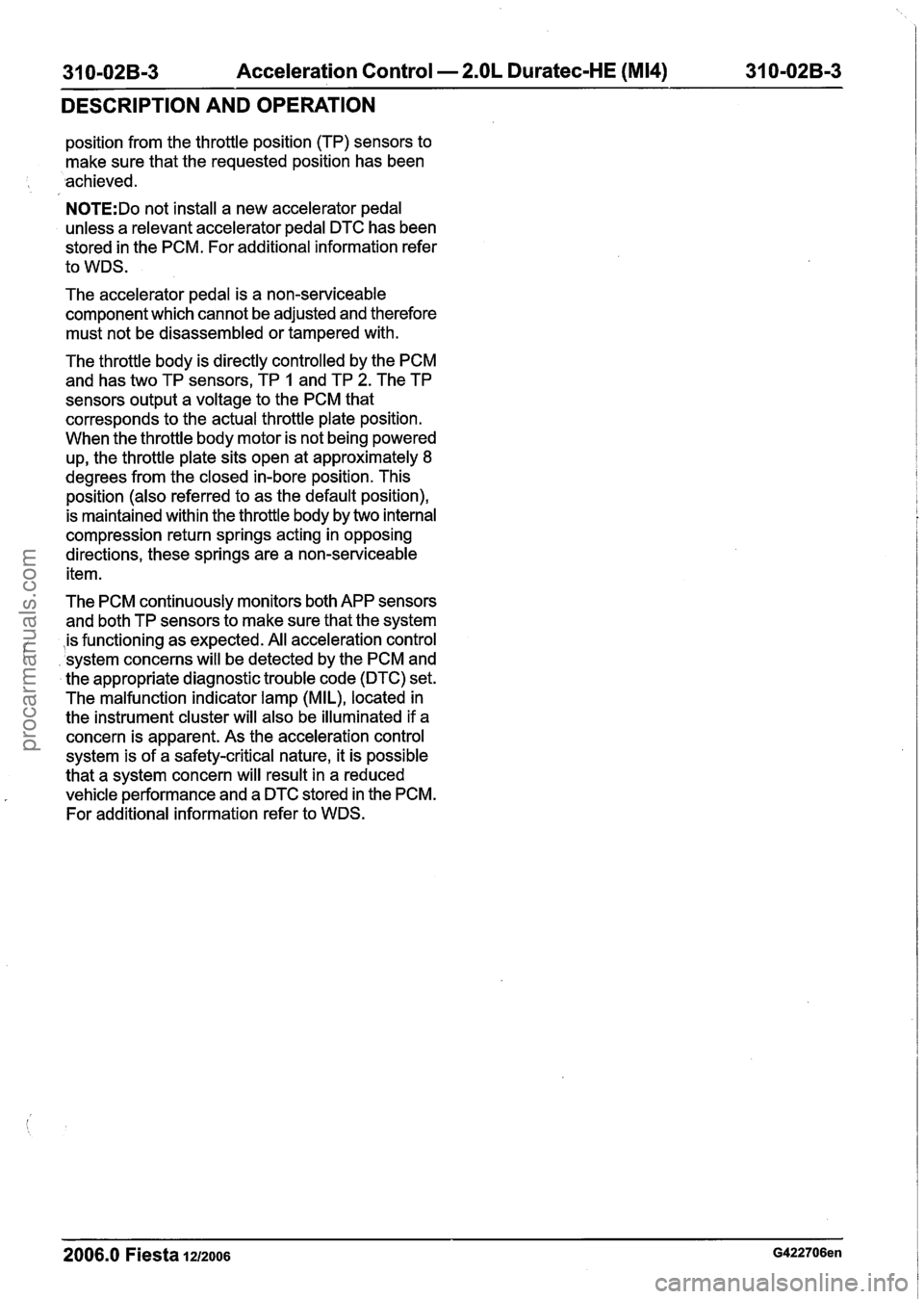Page 1075 of 1226
308-01 -3 Clutch 308-01 -3
DESCRIPTION AND OPERATION
Clutch
Self-adjusting clutch Item Description
Advantages of the self-adjusting clutch
kern Descri~tion
I A I Release force in kN I
The self-adjusting clutch has the following
advantages over conventionally designed clutches:
lower release forces, which remain constant
over the service life and thus ensure high driving
comfort throughout the entire service life
increased wear reserve and therefore greater
service life due to the automatic wear
adjustment
/ i, ' Function
B
2006.0 Fiesta 1212006 G251010en
Release travel in mm
procarmanuals.com
Page 1077 of 1226
308-01 -5 Clutch 308-01 -5
DESCRIPTION AND OPERATION
When the sensing Belleville washer is displaced
this results in an air gap between the main
i Belleville washer and the clutch cover.
The adjusting ring (ramp ring) arranged around the
circumference immediately compensates for the
air gap. To do this, springs press the adjusting ring
and therefore the ramp against the main Belleville
washer.
This results in a balancing of the clutch actuation
mechanism, which keeps the forces required to
operate the clutch constant throughout the entire
service life of the clutch.
2006.0 Fiesta 1212006 G251010en
procarmanuals.com
Page 1181 of 1226
309-00-5 Exhaust System 309-00-5
DESCRIPTION AND OPERATION
All exhaust systems are single-part systems. The
final muffler can be renewed separately in service.
1 In this case the pipe needs to be cut through, and
the new final muffler needs to be secured with a
servicing clamp.
2006.0 Fiesta 1212006 GI 67275en
procarmanuals.com
Page 1225 of 1226

31 0-02B-3 Acceleration Control - 2.OL Duratec-HE (M14) 31 0-02B-3
DESCRIPTION AND OPERATION
position from the throttle position (TP) sensors to
make sure that the requested position has been
lachieved .
N0TE:Do not install a new accelerator pedal
unless a relevant accelerator pedal DTC has been
stored in the PCM. For additional information refer
to WDS.
The accelerator pedal is a non-serviceable
component which cannot be adjusted and therefore
must not be disassembled or tampered with.
The throttle body is directly controlled by the PCM
and has two TP sensors, TP
1 and TP 2. The TP
sensors output a voltage to the PCM that
corresponds to the actual throttle plate position.
When the throttle body motor is not being powered
up, the throttle plate sits open at approximately 8
degrees from the closed in-bore position. This
position (also referred to as the default position),
is maintained within the throttle body by two internal
compression return springs acting in opposing
directions, these springs are a non-serviceable
item.
The PCM continuously monitors both APP sensors
and both TP sensors to make sure that the system
,is functioning as expected. All acceleration control
( 'system concerns will be detected by the PCM and
the appropriate diagnostic trouble code (DTC) set.
The malfunction indicator lamp (MIL), located in
the instrument cluster will also be illuminated if a
concern is apparent. As the acceleration control
system is of a safety-critical nature, it is possible
that a system concern will result in a reduced
vehicle performance and a DTC stored in the PCM.
For additional information refer to WDS.
2006.0 Fiesta 1212006 G422706en
procarmanuals.com